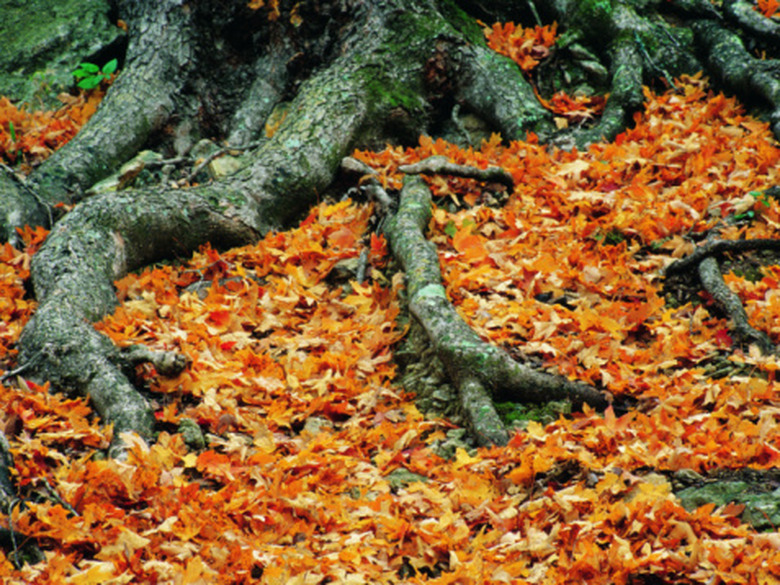How Do Plants Get Protein?
Ever wondered where protein comes from? In order to answer this question, it's important to first understand what protein is. Proteins are macromolecules made up of joined groups of amino acids. There are many different proteins, each with a vital structural, enzymatic or functional role that supports all life on Earth.
Do Plants Have Protein?
Do Plants Have Protein?
Like all life on Earth, plants have protein. Some plant proteins support their immune system; others play critical roles in photosynthesis or assist with internal transportation systems of nutrients, including the ability of cells to take in glucose. Furthermore, proteins are essential to a variety of plant processes . Many aid gene expression and cell division needed for cellular repair and reproduction. Proteins have so many functions that they are often referred to as life's building blocks.
How Do Plants Get Nutrients?
How Do Plants Get Nutrients?
Plants are autotrophs, which means they get their nutrients from their environment (unlike animals, which obtain nutrients by eating plants or other animals). In the soil, nutrients dissolve into the groundwater. Plants then take in this nutrient-filled water through their root system.
There are nine critical macroelements, including nitrogen, potassium and phosphorus, that plants need to survive. Additionally, seven microelements such as copper, iron and zinc are also vital. However these are needed in lower quantities. Plants use these nutrients to support their cellular systems, growth and reproduction. For example, potassium plays a crucial role in photosynthesis.
Necessary Elements for Protein Production
Necessary Elements for Protein Production
The key ingredients plants need for protein production are glucose and nitrates, which are taken up from the soil by the roots. When glucose and nitrates are joined, they produce amino acids. During protein synthesis, multiple amino acids are bound together to make proteins.
The Nitrogen Cycle
The Nitrogen Cycle
Plants rely on the nitrogen cycle to transform gaseous nitrogen into usable nitrates. This transformation process is called fixation.
The nitrogen cycle has three main phases. First, nitrogen gas diffuses into the soil from the atmosphere or breaks down into the soil as dead organisms decompose. This decomposition process produces ammonia. The nitrifying bacteria then convert the ammonia into nitrites and finally nitrates. Some plants, such as legumes and clover, have nodules in their roots which house nitrogen-fixing bacteria.
After plants use nitrates to make proteins, animals eat the plants to manufacture their proteins then return ammonia and nitrogen into the soil through their waste products. The final nitrogen cycle stage is called denitrification, which turns nitrates back into gaseous nitrogen. This is completed by bacteria that use nitrates instead of oxygen for their biological processes.
Protein Synthesis
Protein Synthesis
The plant's DNA contains the codes for all the proteins needed and how to make them. First, messenger ribonucleic acid (mRNA) is transcribed and processed from the DNA by RNA polymerase. Then protein synthesis occurs in a part of the cell called a ribosome.
Every living creature on Earth has ribosomes. Many cells contain multiple ribosomes. Ribosomes are themselves formed of proteins and ribosomal RNA (rRNA). The role of ribosomes is to read the mRNA code and piece together the amino acids based on the code. This process is called translation.
The mRNA code is made up of a sequence of four nucleotides. On the mRNA, groups of three nucleotides are called a codon. The codon provides a description for making an amino acid. Next, transfer RNA (tRNA) binds to a specific amino acid at one end and, on the other, to a section of the mRNA being read within the ribosome. As the ribosome moves the tRNA across its three connection sites, the amino acids bond together, forming a polypeptide chain that, when released, is a protein or partial protein.
References
Cite This Article
MLA
Jerrett, Adrianne. "How Do Plants Get Protein?" sciencing.com, https://www.sciencing.com/how-do-plants-get-protein-13428186/. 1 December 2021.
APA
Jerrett, Adrianne. (2021, December 1). How Do Plants Get Protein?. sciencing.com. Retrieved from https://www.sciencing.com/how-do-plants-get-protein-13428186/
Chicago
Jerrett, Adrianne. How Do Plants Get Protein? last modified March 24, 2022. https://www.sciencing.com/how-do-plants-get-protein-13428186/
